Kyoto, the cultural heart of Japan, offers a timeless journey through history, tradition, and natural beauty. Discover its iconic temples, serene gardens, and vibrant festivals.
1.1 Why Visit Kyoto?
Kyoto is a city steeped in history, culture, and natural beauty, offering countless reasons to visit. Its iconic temples, such as Kinkaku-ji and Fushimi Inari, showcase Japan’s spiritual heritage. The city’s serene gardens, like those at Arashiyama, provide tranquility amidst vibrant autumn foliage or cherry blossoms. Kyoto’s traditional tea ceremonies and kaiseki dining invite visitors to immerse themselves in local customs. Festivals like Gion Matsuri highlight the city’s lively cultural scene. With its unique blend of ancient traditions and modern charm, Kyoto is a must-visit destination for anyone seeking an authentic Japanese experience. Whether you’re exploring historic sites, strolling through bamboo groves, or indulging in local cuisine, Kyoto promises unforgettable memories.
1.2 When to Visit Kyoto
Kyoto is a year-round destination, each season offering unique charm. Spring (March-May) brings cherry blossoms, with iconic spots like Philosopher’s Path and Maruyama Park. Summer (June-August) features vibrant festivals, such as Gion Matsuri, though temperatures can be high. Autumn (September-November) is renowned for its stunning foliage, with popular areas like Arashiyama and Kinkaku-ji glowing in golden hues. Winter (December-February) offers serene landscapes, with temples and gardens blanketed in snow. The best times to visit are spring and autumn, with mild weather ideal for exploring. Timing your visit during seasonal highlights ensures an unforgettable experience, whether admiring blossoms or enjoying festive events. Plan according to your preferences for weather and crowd levels to make the most of your trip.
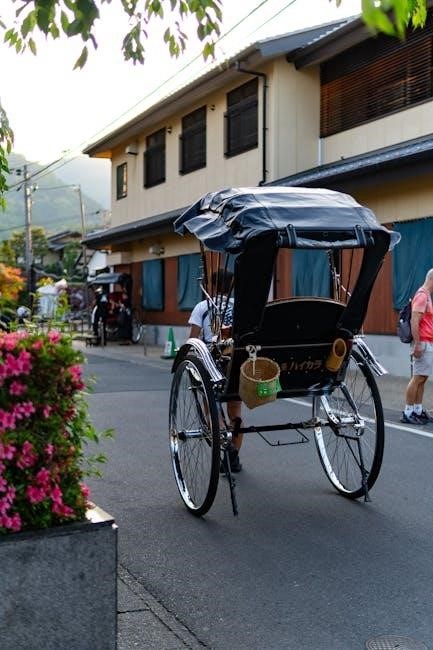
Historical Background of Kyoto
Kyoto, founded in 794, served as Japan’s capital for over 1,000 years. Its rich history is preserved in its temples, shrines, and cultural traditions, making it a timeless city.
2.1 Overview of Kyoto’s History
Kyoto, founded in 794 by Emperor Kanmu, served as Japan’s capital for over 1,000 years. Its history is deeply intertwined with the rise and fall of imperial and samurai rule. The Heian period (794–1185) marked Kyoto’s cultural zenith, with its courts, temples, and arts flourishing. The city survived wars, fires, and political upheavals, becoming a symbol of resilience. During the Edo period (1603–1868), Kyoto remained a cultural hub, preserving its traditions and craftsmanship. The Meiji Restoration of 1868 shifted Japan’s capital to Tokyo, but Kyoto retained its historical and spiritual significance. Today, its ancient architecture, temples, and festivals offer a glimpse into Japan’s rich past, making Kyoto a living museum of history and culture.
2.2 Kyoto’s Role as Japan’s Cultural Capital
Kyoto is renowned as Japan’s cultural capital, preserving centuries of traditions, arts, and spirituality. Its temples, shrines, and gardens embody the essence of Japanese aesthetics. The city is a sanctuary for traditional arts, including tea ceremonies, calligraphy, and classical theater. Kyoto’s cuisine, known as kaiseki, reflects its refined culinary traditions. Festivals like Gion Matsuri and Jidai Matsuri celebrate its rich heritage. The city’s architecture, from wooden machiya houses to grand palaces, showcases its historical depth. As a UNESCO World Heritage site, Kyoto attracts global admiration. Its role as a cultural capital is not just historical but living, as it continues to inspire modern arts and traditions. Kyoto’s timeless beauty and spiritual ambiance make it a cornerstone of Japan’s identity.
Kyoto offers a wealth of cultural experiences, blending tradition and modernity. Explore traditional tea ceremonies, vibrant festivals, and exquisite kaiseki dining. Immerse yourself in its artistic heritage.
Kyoto’s traditional festivals and events are vibrant displays of its cultural heritage. The Gion Matsuri, held in July, is one of Japan’s most famous festivals, showcasing ornate floats and traditional performances. Another highlight is the Jidai Matsuri, where participants dressed in historical costumes parade through the city, celebrating Kyoto’s history. The Aoi Matsuri in May is a spectacular event featuring sacred rituals and traditional music. These festivals offer a glimpse into Kyoto’s rich history and spiritual traditions, attracting visitors from around the world. They are a must-experience for anyone looking to deeply connect with the city’s cultural essence. Kyoto is the heart of Japan’s traditional tea culture, where the art of Chanoyu, Sado, or Ocha is deeply revered. The tea ceremony, a ritual steeped in Zen Buddhism, embodies the principles of harmony, respect, and tranquility. Visitors can experience this timeless tradition in historic tea houses like the Urasenke Foundation, where the meticulous preparation of Matcha green tea is performed with precision and grace. The ceremony is not just about drinking tea; it’s a spiritual experience that connects participants to nature and the moment. The traditional tea room, adorned with calligraphy and seasonal flowers, enhances the serene atmosphere. Participating in a tea ceremony is a must-do in Kyoto, offering a profound insight into Japan’s cultural soul. It’s a moment of mindfulness and connection to centuries of tradition. Kyoto is a paradise for food enthusiasts, with Kaiseki dining being its crown jewel. This traditional multi-course meal emphasizes local, seasonal ingredients, presenting a harmonious balance of flavors and aesthetics. Each dish is meticulously prepared to reflect the changing seasons, often featuring delicacies like freshwater trout, matsutake mushrooms, and Kyoto vegetables. The meal is typically served in an intimate setting, enhancing the dining experience. Beyond Kaiseki, Kyoto offers iconic dishes such as shojin-ryori (Buddhist vegetarian cuisine) and yudofu (boiled tofu). Local specialties like yuba (tofu skin) and tsukemono (pickles) are must-tries. The city’s culinary scene is deeply rooted in tradition, making it a destination for those seeking authentic Japanese flavors. Kyoto is a cultural gem, offering countless iconic landmarks and serene natural beauty. Explore the vibrant Fushimi Inari Shrine, adorned with thousands of torii gates, and visit the stunning Kinkaku-ji, a golden pavilion reflecting in its tranquil pond. Stroll through the breathtaking Arashiyama Bamboo Grove, and discover the historic Kiyomizu-dera Temple, a UNESCO World Heritage site. These attractions embody Kyoto’s rich history, spiritual essence, and artistic charm, making it a must-visit destination for travelers seeking unforgettable experiences. Fushimi Inari Shrine is one of Kyoto’s most iconic landmarks, renowned for its thousands of vibrant orange torii gates that form a stunning tunnel up Mount Inari. Dedicated to the Shinto god of rice, Inari, the shrine attracts millions of visitors annually. The gates, donated by devotees, create a mesmerizing pathway through the forested mountain. Visitors can hike the trails, offering breathtaking views of Kyoto, or explore the shrine’s main buildings. Fushimi Inari is a must-visit for its unique beauty and spiritual significance. Located in southern Kyoto, it’s easily accessible by train, making it a perfect day trip destination. The shrine is free to visit, though donations are appreciated. A truly unforgettable experience awaits here. Kinkaku-ji, or the Golden Pavilion, is a breathtaking Zen temple in Kyoto, famously known for its stunning gold leaf-covered exterior. Situated in a serene garden, the pavilion reflects elegantly in the surrounding pond, creating a picturesque scene. Built in 1397 as a retirement villa for Shogun Ashikaga Yoshimitsu, it later became a temple. The structure is a perfect blend of Japanese architecture and natural beauty. Visitors can admire the golden facade, explore the tranquil gardens, and enjoy the peaceful atmosphere. The temple is a symbol of Kyoto’s rich cultural heritage and a must-visit attraction. Its beauty captivates millions of visitors annually, making it one of Kyoto’s most iconic landmarks. The Golden Pavilion truly embodies the essence of Japanese aesthetics and spirituality. The Arashiyama Bamboo Grove, located in western Kyoto, is a mesmerizing natural wonder. This sprawling bamboo forest offers a serene atmosphere, with towering stalks swaying gently in the wind. Visitors can walk along the narrow paths, immersing themselves in the emerald-green hues and the soft rustling sounds of the bamboo. The grove is particularly stunning during early morning or late afternoon when sunlight filters through the stalks, creating a magical ambiance. Nearby attractions include the Monkey Park Iwatayama and the Togetsukyo Bridge, making it a perfect spot for a day trip. The bamboo grove is also a popular spot for photography and reflection, showcasing Kyoto’s harmonious blend of nature and culture. It’s a must-visit for those seeking tranquility and natural beauty. Kiyomizu-dera Temple, a UNESCO World Heritage site, is one of Kyoto’s most iconic landmarks. Perched on a hillside, it offers breathtaking views of the city and surrounding valleys. The temple is famous for its wooden stage protruding over the valley, providing a thrilling vantage point. Founded in 778 AD, Kiyomizu-dera is dedicated to the goddess of mercy, Kannon, and is a sacred site for Buddhists. Visitors can explore the main hall, prayer halls, and the Jishu Shrine, which is dedicated to the god of love. The temple is particularly stunning during autumn, when the maple trees turn vibrant red. Located at 294 Kiyomizu, Higashiyama-ku, it is a must-visit for its historical significance, architectural beauty, and serene atmosphere. Kyoto’s temples and shrines are its soul, blending spiritual heritage with architectural beauty. They reflect the city’s deep-rooted Buddhist and Shinto traditions, offering serene escapes amidst vibrant culture. Kyoto is home to over 1,600 temples, each with its own unique history and architectural style. These sacred sites are central to the city’s spiritual identity, reflecting centuries of Buddhist influence. Many temples date back to the Heian and Edo periods, showcasing intricate designs with wood, tiles, and natural materials. They often feature serene gardens, peaceful courtyards, and ornate statues. Temples in Kyoto serve not only as places of worship but also as community hubs, hosting rituals and ceremonies. From the iconic Kinkaku-ji to the serene Ryoan-ji, these temples embody the city’s spiritual essence. They offer visitors a glimpse into Japan’s religious heritage and a chance to experience tranquility amidst Kyoto’s bustling culture. Kyoto is renowned for its iconic Shinto shrines, each steeped in history and cultural significance. Fushimi Inari Shrine, famous for its thousands of vermilion torii gates forming a tunnel up the mountain, is a must-visit. Another notable shrine is Yasaka Shrine, often called Gion Shrine, which is deeply connected to Kyoto’s geisha culture. These shrines are not just religious sites but also integral to local traditions and festivals. They offer a glimpse into Japan’s spiritual practices and the stories behind their founding. Visitors can explore their grounds, admire their architecture, and participate in rituals like coin offerings or prayer. These shrines are living symbols of Kyoto’s enduring spiritual and cultural heritage, attracting millions of visitors each year. Kyoto’s gardens and natural landscapes offer serene beauty, with Zen gardens, imperial villas, and vibrant seasonal changes. Temple and shrine grounds blend nature with spiritual ambiance, creating unforgettable experiences. Kyoto is renowned for its stunning gardens, each offering a unique glimpse into Japan’s timeless beauty. The Arashiyama Bamboo Grove is a must-visit, with its towering bamboo stalks creating a serene, natural tunnel. Kinkaku-ji, the Golden Pavilion, boasts a picturesque garden surrounding its iconic golden structure, perfect for reflection. Ryoan-ji’s rock garden, with its sparse, carefully arranged stones, invites meditation and contemplation. Tenryu-ji Temple’s expansive pond garden, Sogenchi Pond, features beautiful walking paths and seasonal flora. Kenrokuen, while technically in Kanazawa, is often mentioned alongside Kyoto’s gardens for its six elements of perfection. These gardens exemplify Kyoto’s harmonious blend of nature and artistry, offering tranquility and inspiration to visitors year-round. Kyoto is a paradise for seasonal scenery enthusiasts. In spring, the city comes alive with cherry blossoms, or sakura, which bloom in late March and early April. Popular spots like Philosopher’s Path, Maruyama Park, and Arashiyama Bamboo Grove are adorned with vibrant pink blossoms, creating breathtaking views. Autumn, meanwhile, transforms Kyoto into a kaleidoscope of warm hues, with maple leaves turning brilliant shades of red, orange, and gold. Iconic locations such as Kinkaku-ji, Kiyomizu-dera, and Tofuku-ji Temple are particularly stunning during this time. The transient beauty of these seasons attracts millions, offering unforgettable experiences. Whether strolling under blooming cherry trees or admiring the fiery autumn foliage, Kyoto’s seasonal scenery is a true marvel of nature. Kyoto is well-connected by an efficient public transport system, including buses, trains, and subways. The JR Sagano Line and Nara Line are convenient for reaching key attractions. Prepaid cards like ICOCA or SUICA simplify travel. Buses cover extensive routes, with many signs in English. Walking and biking are popular due to the city’s compact layout and scenic paths. Rental bikes are widely available. Taxis are an option but can be costly for longer distances. Plan ahead using apps like Google Maps or Hyperdia to navigate smoothly. Consider purchasing a one-day bus or subway pass for unlimited rides, saving time and money. Public transport typically runs from early morning until around 11 PM. Kyoto offers a variety of accommodations to suit every traveler’s needs, from traditional ryokans to modern hotels. The city is divided into distinct areas, each with its own charm. Gion, the historic geisha district, is ideal for those seeking a traditional atmosphere. Downtown Kyoto, near Kawaramachi, provides easy access to shops, restaurants, and public transport. Arashiyama is perfect for nature lovers, while Fushimi offers budget-friendly options close to key attractions. Consider staying in a ryokan for a unique cultural experience, or opt for a modern hotel with amenities like spas and Wi-Fi. Booking in advance is recommended, especially during peak seasons like cherry blossom time. Choose a location that aligns with your itinerary to maximize your Kyoto experience. Kyoto is a treasure trove for shoppers, offering a rich array of local crafts and souvenirs that reflect its cultural heritage. The city is renowned for its traditional goods, such as handmade pottery, woven textiles, and intricate lacquerware. Visitors can explore historic shopping districts like Gion, where boutique stores sell high-quality kimonos and artisanal accessories. Nishiki Market is another must-visit, offering a variety of local delicacies and unique souvenirs. For a modern twist, Kawaramachi Street blends traditional shops with contemporary boutiques and cafes. Popular souvenirs include Kyoto-style fans, matcha-based sweets, and handcrafted wooden items. Shopping in Kyoto allows travelers to take a piece of its timeless beauty home.
Cultural Experiences in Kyoto
3.1 Traditional Festivals and Events
3.2 Tea Ceremonies and Their Significance
3.3 Kaiseki Dining and Local Cuisine
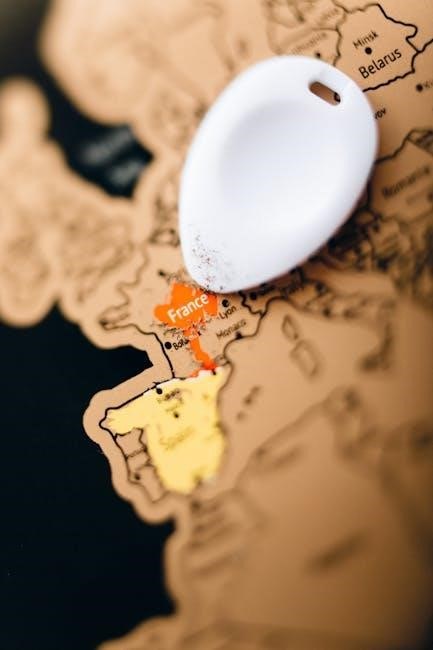
Best Attractions in Kyoto
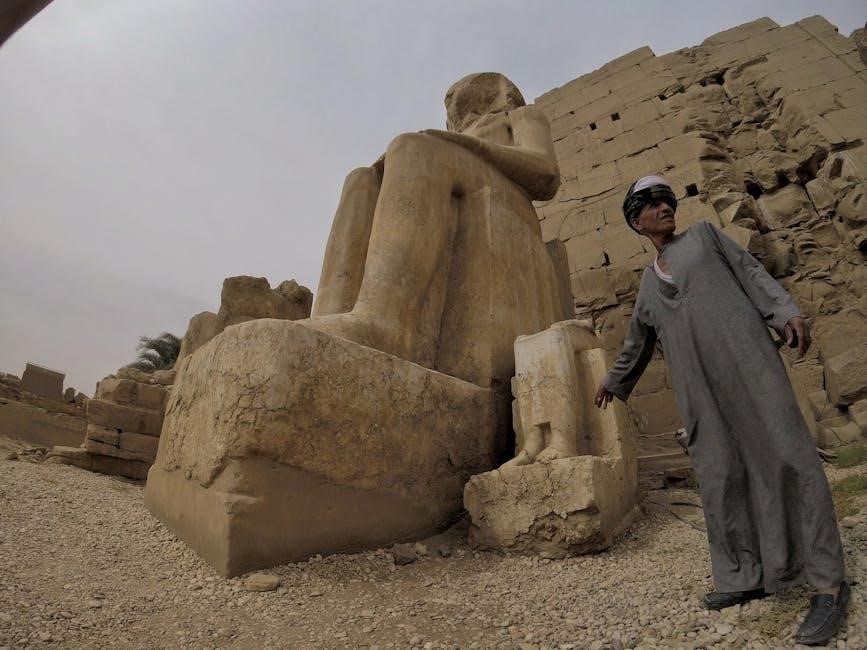
4.1 Fushimi Inari Shrine
4.2 Kinkaku-ji (Golden Pavilion)
4.3 Arashiyama Bamboo Grove
4.4 Kiyomizu-dera Temple
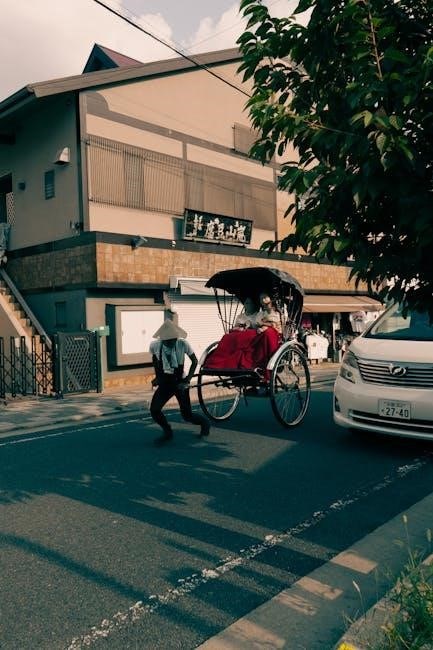
Temples and Shrines
5.1 Overview of Kyoto’s Temples
5.2 Famous Shrines and Their Stories

Gardens and Nature in Kyoto
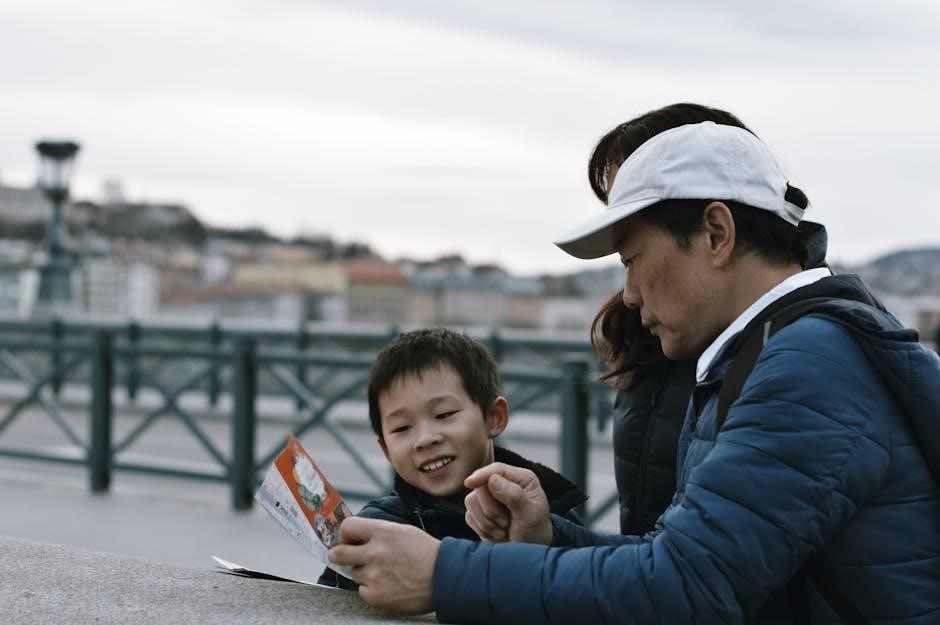
6.1 Best Gardens to Visit
6.2 Seasonal Scenery (Cherry Blossoms, Autumn Leaves)
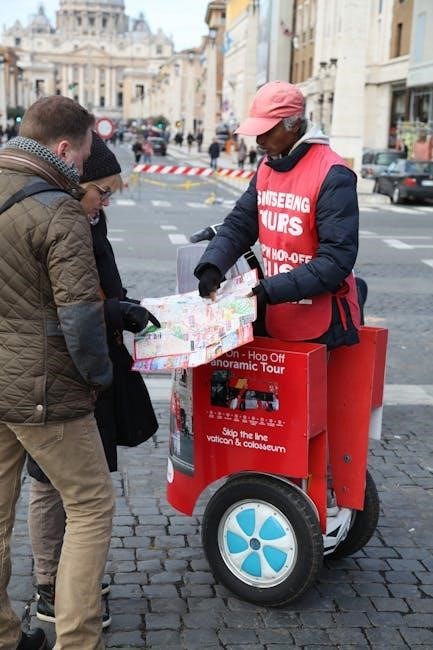
Travel Tips and Essentials
7.1 Getting Around Kyoto

7.2 Where to Stay in Kyoto
7.3 Shopping in Kyoto (Local Crafts, Souvenirs)
